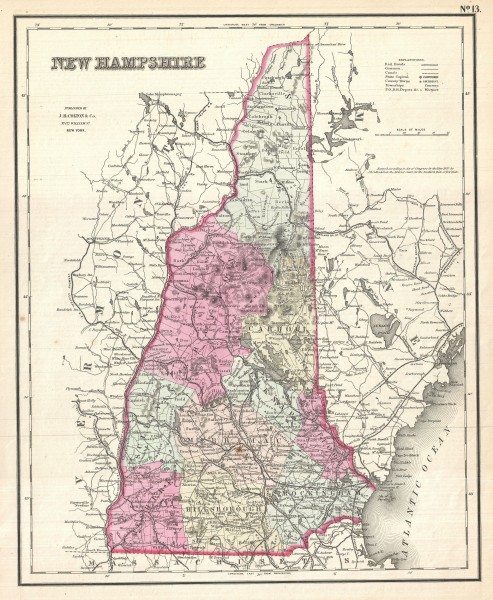Lake Winona: NH’s Geographical Center
The article, “What is the Geographical Center of New Hampshire?”, was originally published by Robert Hanaford Smith, Sr. of the The Weirs Times on Feb. 25, 2016.
If you search for information on the geographical center of the State of New Hampshire you are apt to find the same statement that pupils in a rural Lakes Region school were given in the year 1923. It is “three miles east of Ashland.” Or the source may say, “three miles east of Ashland in Belknap County” or just “near Ashland.”
It might tell you that the spot is near the New Hampton and West Centre Harbor border. It can’t be in Ashland because that town is in Grafton County, so based on media accounts, past and present, we can conclude that the geographical center of the State of New Hampshire is in the town of New Hampton or Center Harbor. There are those, however, who have come up with a more specific location.
The teacher and pupils of the Union School (union of the towns of New Hampton, Center Harbor, and Ashland) which was also located about three miles east of Ashland, were not satisfied with the vagueness of the U.S. Geological Survey’s report. The geography students, with the help of their teacher, undertook the test of finding the exact center of our state. Though the Winona area school had in previous years had enrollments as high as 50, in 1923 the Union School had 11 pupils. Their teacher was Miss Elva Walbridge who had come to the area from St. Johnsbury, Vermont.
How do you go about finding the center of something that is not a square, rectangle, or a circle? New Hampshire may be close to a triangle, but with a lot of jagged edges.
Miss Walbridge’s students decided to use the same method that the Geological Survey used. The Boston Post Sunday newspaper of May 20, 1923 described the process the young explorers used in their quest for accuracy. The premise is that “the geographic center of an area is at the point which the surface would balance if it were a place of uniform thickness, or in other words, it is the center of gravity of an area.”
An accurate map of the state which was on heavy paper was selected and any excess paper beyond the actual boundaries were cut off. “A long thread, with a weight attached, was used for a plumb line, and a pin was run through a knot in the thread and through an angle of the map close to the edge so that both the map and the plumb line were suspended from the pin.”
A pencil line was then made close the thread and approximately at the center of the map. Another angle in the map was then selected so that the plumb line would hang at a considerable angle from the first position and a second line was drawn crossing the first. In this way four or five lines were drawn on the back of the map. The center (print not clear) thus found was transferred by a pinhole to face the map and its distance and direction to some well-known locality were scaled.”
The conclusion reached by this method placed the exact center of New Hampshire just off the shore of Lake Winona, also known as Long Lake, under water. Interestingly, the location of the Union School students determined to be the center of New Hampshire is also the area of the lake that legend relates that long ago a beautiful Indian Princess named Winona drowned during a nighttime swim in the lake that bears her name. It is believed she was protecting her modesty by refusing to exit the water because an Indian brave was watching her from the shore. She became exhausted and sank.
That’s another story, but it became associated with a small school’s quest to answer a geography question more accurately than government experts had published, adding to the legend the story that the exact spot of her death coincides with the exact geographical center of New Hampshire.
Maybe you could use the same method the Union School pupils used to determine the exact geographical center of the town which you reside in. Or maybe you would like to do your own search to determine the accuracy of the 1923 experiment by those students from the center of New Hampshire, located three miles east of Ashland.
Another source will tell you that the center of the Granite State is located somewhere between Winona Lake and Jackson Pond in New Hampton. For those who are sure my summary of the Winona legend is wrong, I know there is a different version. The one I have mentioned was apparently the one circulating in 1923.
There are other legends told in other States of a Princess Winona whole life ended in tragedy, which makes one wonder how long ago legends of Winona were told, not only from generation to generation, but perhaps from tribe to tribe.
